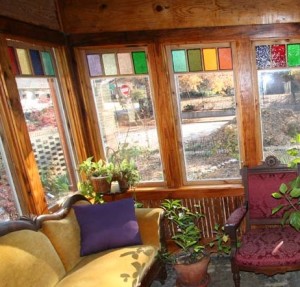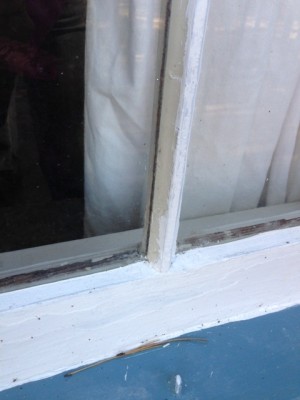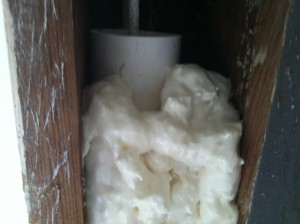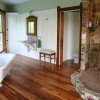We have done a lot of window restoration, mainly of windows that are 80-130 years old. Mostly, the windows we restore haven’t been touched in decades, except some re-glazing and enough paint to make sure that the windows are stuck shut.
There are different levels of window restoration. Bare bones is simply cutting the paint bond (between the window and the jamb) with a case knife to get the windows to operate. But often the cotton ropes that hold the window weights are dry rotted or brittle with paint. Often they are totally severed.
We’ve done extensive window restoration by taking old reclaimed heart of pine and actually manufactured the rails, stiles, and mullions of old damaged windows and putting them back together. Oftentimes, we replace random plexiglass with old wavy glass.
We also do a lot of reglazing–which is labor intensive and a careful art. Last thing you want to do is shatter a beautifully imperfect piece of wavy window glass.
But one of our best practices, a trademark of sorts, is removing the casings from the sides of the windows, installing 2 inch (usually) PVC plumbing pipes on each side, re-roping the weights and then putting them in the pipe. This keeps the weights sliding smoothly, not getting hung up on errant nails or splintered framing. It also keeps the ropes protected from rough wood.
The other thing this allows us to do is insulate the drafty weight channel with insulation foam, which we can spray liberally around the PVC pipe, sealing up the gap between drafty clapboards and casing boards on the inside. It is amazing how much air passes between these spaces.
The only drawback to this insulating method is that it’s a good deal of labor. The casings are removed, the ropes are replaced and re-secured to the lead weights, the pipe is installed and the plaster needs to be cut and removed from below the sill and above the header for proper foam install. Then, sheetrock needs to be installed above and below the window before the casings and trim are nailed back in place.
Finally, the whole unit will need to be caulked and painted.
If glazing is tackled on the outside of the window and parts of the wood are replaced, it can be an expensive affair. But many old house lovers value and appreciate the beauty and craftsmanship of their old windows.
I also recommend installing storms to protect your old wood and new glazing. They create another layer of air between the glass panels and keep the water off vintage sashes. We build custom storms and paint them to match original sashes and install them awning style, with hinges, so they can be propped open on lovely spring days.






